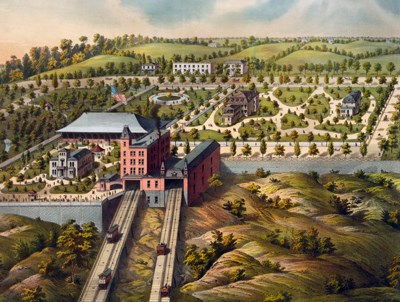Last updated: April 4, 2017
Article
Inclined to Move

Wikimedia: Dllu

Library of Congress
Railway Transportation on the Hills
Incline Planes, Cliff Railways or Funiculars have been around for quite some time, dating back to the early 19th century. Inclines boomed in popularity in the late 19th century but with alternative modes of transportation emerging in the 20th century, their popularity declined at the turn of the century. Some cities with inclines still in use today are Pittsburgh, San Francisco, Fribourg in Switzerland, Cape Point in South Africa and Hastings in England. Inclines utilize two, three or four rails to move their cars up and down the hillsides.
In Cincinnati, there were a total of five inclines in use between 1871 and 1948. They all used the four-rail system to transport their trollies up and down the hillsides. One of those inclines took travelers up and down the hillside not far from where William Howard Taft National Historic Site is today. That incline, known as the Mount Auburn incline or the Main Street incline or the Lookout incline, was the first incline in Cincinnati. It would also be the first incline in Cincinnati to close due to a combination of a tragic accident and aggressive competition from other local railways. Read about the incline history in the Mount Auburn area of Cincinnati
